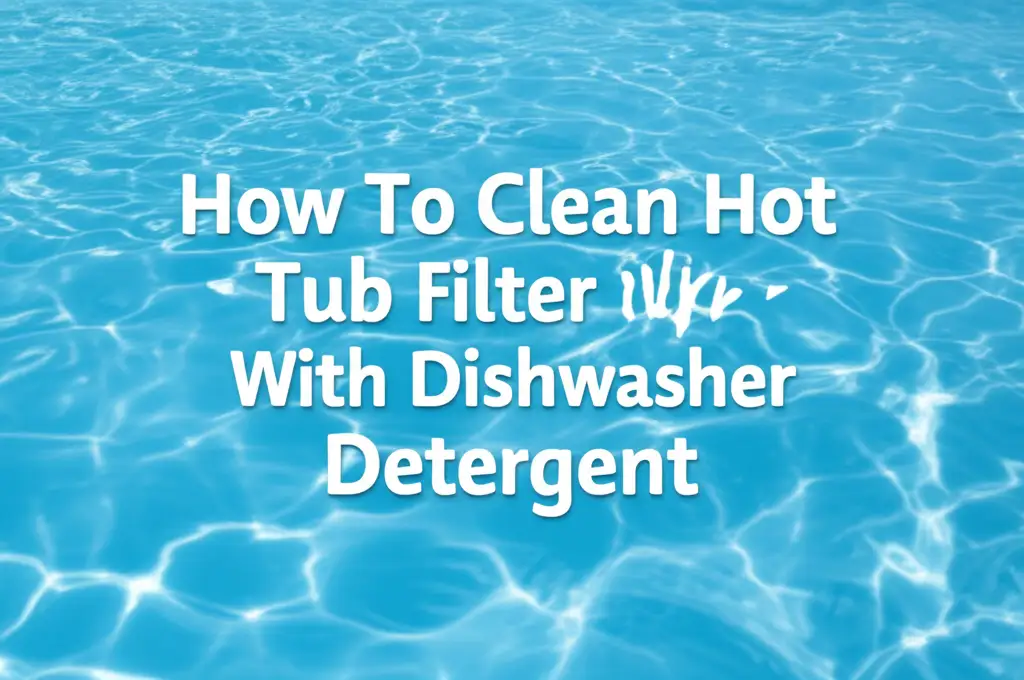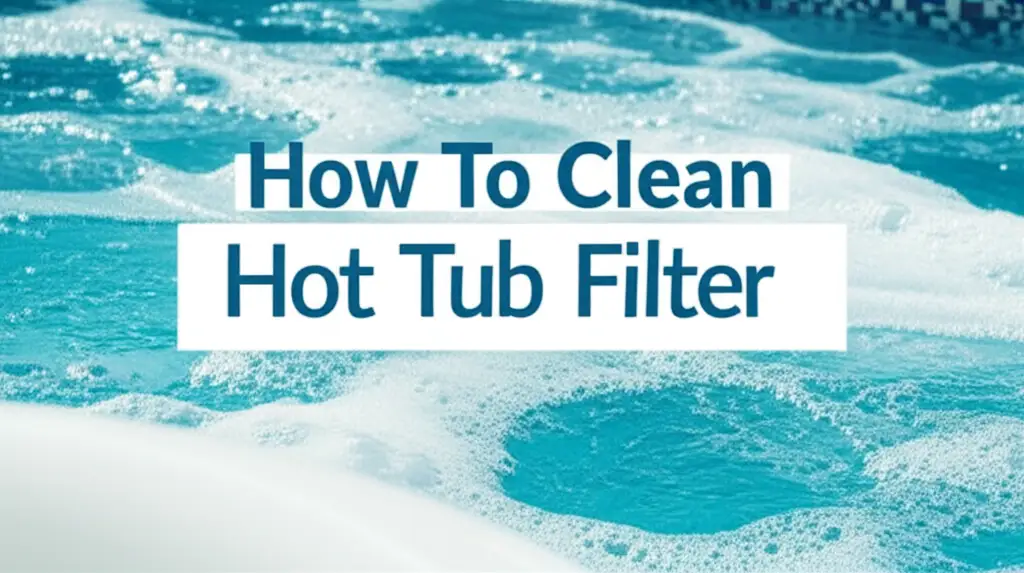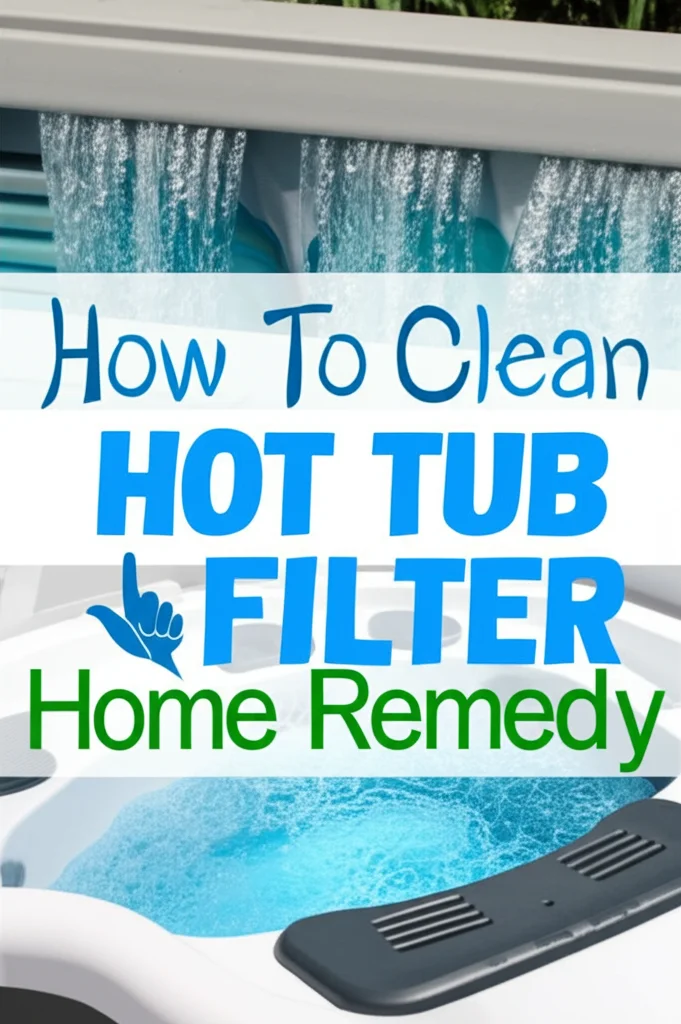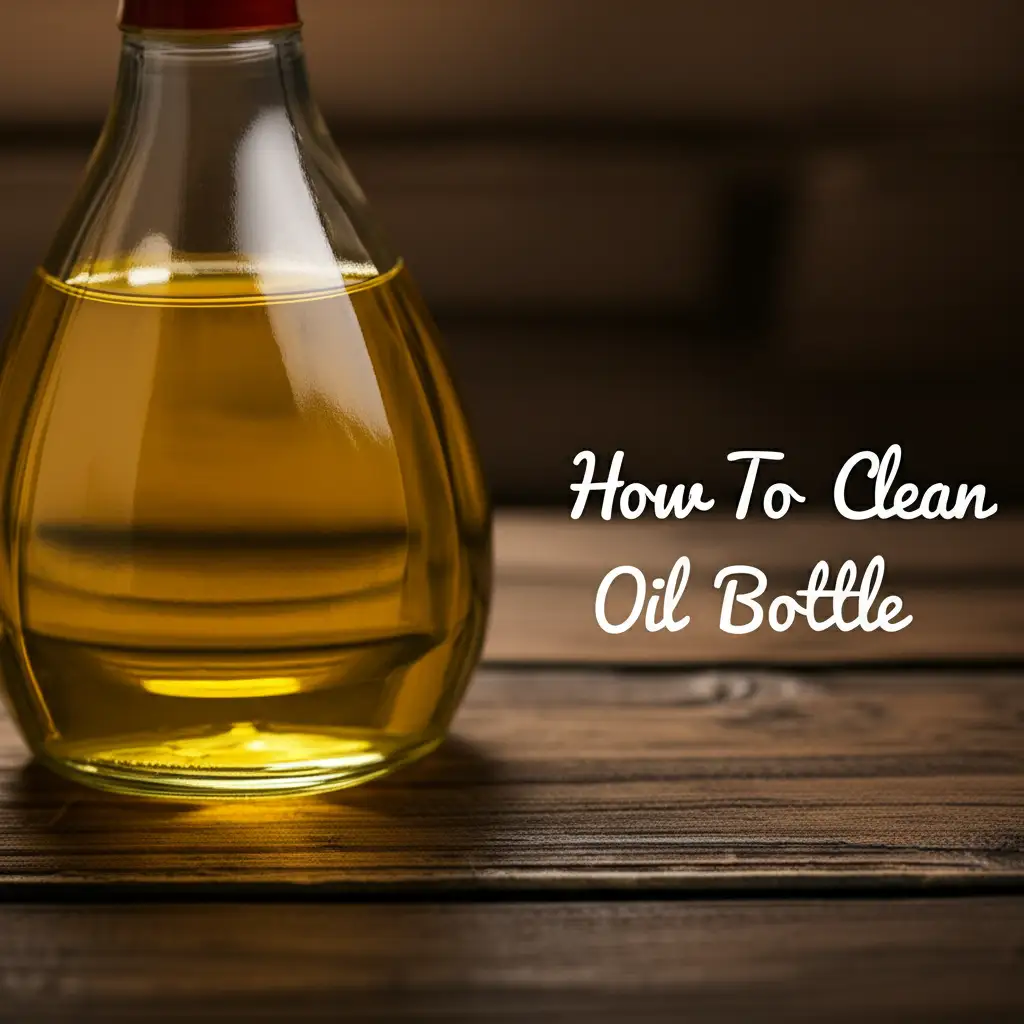· Hot Tub Maintenance · 19 min read
How To Clean Hot Tub With Vinegar
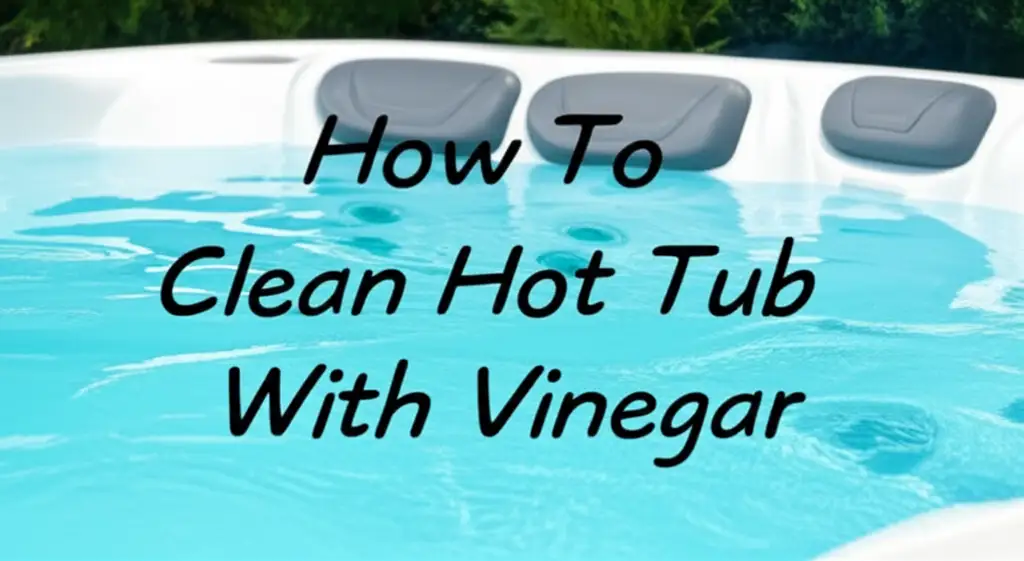
Effortlessly Clean Your Hot Tub with Vinegar
Owning a hot tub offers fantastic relaxation. You deserve a clean, inviting soak every time you step in. However, hot tubs need regular cleaning to stay hygienic and perform well. Mineral deposits, grime, and biofilm can build up over time. If you seek a natural, effective, and budget-friendly cleaning solution, knowing how to clean a hot tub with vinegar is a game-changer. Vinegar, a common household item, offers surprising cleaning power for your spa. This guide will show you how to use vinegar to keep your hot tub sparkling. We will cover everything from draining and deep cleaning to filter maintenance.
Takeaway
- Vinegar offers a natural, effective, and affordable way to clean your hot tub.
- It breaks down mineral deposits, grime, and biofilm from plumbing and surfaces.
- A thorough vinegar cleaning involves draining, purging plumbing, cleaning surfaces, and maintaining filters.
To clean a hot tub with vinegar, you will drain the tub, fill it with a vinegar-water solution to purge the plumbing, scrub surfaces, clean filters, and then drain, rinse, and refill it, ensuring a deep clean that removes mineral buildup and grime naturally.
Why Choose Vinegar for Hot Tub Cleaning?
You might wonder why vinegar is good for cleaning a hot tub. Vinegar, specifically white distilled vinegar, is a mild acid. This acidity makes it excellent at dissolving mineral deposits. These deposits, often called scale or hard water stains, build up inside your hot tub’s pipes, on its jets, and across its shell. Over time, scale reduces jet performance and can harbor bacteria.
Vinegar also helps break down biofilm. Biofilm is a slimy layer of microorganisms that can form in damp environments, like your hot tub plumbing. It protects bacteria from sanitizers. Using vinegar helps loosen this film, allowing for better removal. It is also a non-toxic option. This means fewer harsh chemicals enter your environment or go down your drain.
Another benefit of using vinegar is its affordability. Specialty hot tub cleaners can be expensive. Vinegar is a common household product. You likely have it in your pantry right now. This makes it an accessible and economical choice for regular hot tub maintenance. It is safe for most hot tub surfaces, including acrylic and fiberglass. Many hot tub owners appreciate a natural cleaning approach. Vinegar provides this without compromising on effectiveness.
I find using vinegar gives me peace of mind. I know I am not introducing harsh chemicals into my spa or the environment. It keeps my hot tub feeling fresh and clean. This method aligns well with an eco-conscious lifestyle. It avoids the strong fumes and potential skin irritations that can come with commercial cleaners.
Gathering Your Hot Tub Cleaning Supplies
Before you start cleaning your hot tub with vinegar, you need to gather the right tools and supplies. Having everything ready saves time and makes the process smooth. You do not want to stop midway to find a forgotten item. This preparation step is crucial for an efficient cleaning session. It ensures you have the necessary items to tackle every part of the hot tub.
Here is a list of what you will need:
- White Distilled Vinegar: This is your main cleaning agent. You will need several gallons, depending on your hot tub’s size. For a standard 200-400 gallon tub, plan on 2-5 gallons. Larger tubs might need more.
- Garden Hose: For draining and refilling the hot tub.
- Submersible Pump (Optional but Recommended): This speeds up the draining process significantly.
- Wet/Dry Shop Vac (Optional): Useful for removing residual water from jets and lines.
- Soft Scrub Brush or Sponge: For cleaning the hot tub shell and seats. Avoid abrasive scrubbers that can scratch the surface.
- Small Bristle Brush (Toothbrush or Bottle Brush): For cleaning jets and hard-to-reach crevices.
- Clean Cloths or Microfiber Towels: For wiping surfaces dry.
- Gloves: Protect your hands from grime and prolonged contact with vinegar.
- Safety Goggles: Protect your eyes from splashes.
- Bucket: For mixing solutions or rinsing small items.
- Hose Filter (Optional): Attaches to your garden hose to filter impurities from your tap water during refilling.
Having these items prepared will make the cleaning process much easier. You will move from one step to the next without interruption. This detailed preparation ensures you are ready for a thorough cleaning. It sets the stage for a sparkling hot tub.
Draining Your Hot Tub Safely
Draining your hot tub is the first essential step in a thorough cleaning process. You cannot clean the tub properly if it holds old water. Proper draining ensures you remove all stagnant water and debris. It also prepares the tub for deep cleaning with vinegar. Always consult your hot tub’s owner manual for specific draining instructions, as methods can vary.
Most hot tubs have a drain valve located near the bottom. You simply connect a garden hose to this valve. Direct the other end of the hose to a suitable drainage area. Remember that the water contains old chemicals and possibly biofilm. Avoid draining it directly onto plants or lawns if your water has high chemical levels. A gravel path or a storm drain is usually a better choice. Some areas have regulations on where you can drain spa water, so check local guidelines.
Gravity drainage can take several hours, especially for large tubs. If you want to speed things up, a submersible pump is a great investment. Place the pump in the deepest part of the hot tub. Connect a garden hose to its outlet. The pump will rapidly remove water, saving you significant time. Once most of the water is out, you might find some remaining in the footwell or jet lines. Use a wet/dry shop vac to remove any puddles. This ensures the tub is as dry as possible before the next cleaning steps.
I always double-check that all water is out. Even small amounts can dilute your cleaning solution. A dry tub allows the vinegar to work at its full strength. This initial step sets you up for a truly effective deep clean. Taking your time here ensures no old water contaminates your fresh clean.
Purging the Plumbing with Vinegar
The internal plumbing of your hot tub holds a lot of unseen grime. Biofilm, mineral scale, and mold can accumulate in these pipes. You cannot reach these areas with a brush. This is where a “purge” with vinegar becomes invaluable. Purging cleans the internal lines, removing hidden contaminants. This step is critical for water clarity and hygiene.
After draining your hot tub, close the drain valve. Refill the tub with fresh water to just above the jets. Do not fill it completely. Now, add your white distilled vinegar. A general rule is to add one gallon of vinegar for every 100 gallons of water capacity. For a 400-gallon hot tub, you would add four gallons of vinegar. Pour the vinegar directly into the filter compartment or across the surface of the water.
Turn on the hot tub’s jets for about 15-30 minutes. This circulates the vinegar solution through all the plumbing lines. It helps the vinegar break down and loosen any buildup. You might see some discolored, foamy water or flecks of debris appear. This shows the vinegar is working. After the circulation, let the hot tub sit with the vinegar solution for at least 8-12 hours, or even overnight. This gives the vinegar ample time to penetrate and dissolve stubborn deposits.
After the soaking period, turn on the jets again for another 15 minutes. Then, drain the hot tub completely. You will likely see more discolored water as it empties. Rinse the shell thoroughly with fresh water from a hose to flush out any remaining debris or vinegar residue. Ensure all vinegar solution is gone before proceeding. This purging step makes a huge difference in the overall cleanliness and hygiene of your hot tub. For deeper insights into similar cleaning challenges, you might find information on how to clean jetted tub with dishwasher tablets helpful, as internal plumbing concepts are shared.
Cleaning Hot Tub Surfaces and Jets with Vinegar
With the internal plumbing purged and the hot tub drained, it is time to focus on the visible surfaces and jets. This step removes surface grime, hard water stains, and any remaining biofilm. A sparkling shell makes your hot tub inviting. Vinegar is safe and effective for most hot tub materials.
Cleaning the Hot Tub Shell
Mix a solution of equal parts white distilled vinegar and water in a spray bottle or bucket. Spray this solution directly onto the hot tub shell, including the seats and footwell. Let it sit for a few minutes. This allows the vinegar to begin dissolving soap scum, body oils, and mineral deposits. For stubborn stains or textured surfaces, you may find additional tips on how to clean fiberglass tub with textured bottom.
Use a soft scrub brush or sponge to gently scrub all surfaces. Pay close attention to the waterline, where grime often collects. You might see hard water spots or calcium buildup. Vinegar is excellent for these. If some spots are particularly stubborn, a paste of baking soda and vinegar can provide extra scrubbing power. Apply the paste, let it sit for a few minutes, then scrub gently. You can learn more about this powerful combination on how to clean with vinegar and baking soda.
After scrubbing, rinse the entire shell thoroughly with fresh water. Use a hose to wash away all the loosened grime and vinegar residue. Ensure no gritty residue remains. Dry the surfaces with a clean cloth to prevent new water spots from forming.
Cleaning the Hot Tub Jets
Jets can accumulate scale and mineral deposits, affecting water flow. While the plumbing purge helps, individual jets might need extra attention. For removable jet nozzles, unscrew them and soak them in a bucket of undiluted white distilled vinegar for a few hours. This dissolves mineral buildup inside the nozzles.
For non-removable jets, spray them generously with your vinegar-water solution. Use a small bristle brush, like an old toothbrush, to scrub around the jet openings. Push the brush into the crevices to dislodge any scale or grime. You can also use a small, stiff wire to carefully clear any visible blockages in the jet orifices. If you encounter significant scaling, tips from how to clean shower head with vinegar might provide further guidance on descaling techniques, as similar principles apply.
Rinse the jets and surrounding areas thoroughly with fresh water. Ensure all vinegar and loosened debris are washed away. Properly cleaned jets ensure optimal water circulation when your hot tub is refilled.
Maintaining Your Hot Tub Filters with Vinegar
Hot tub filters are the workhorses of your spa’s water clarity. They trap debris, oils, and other contaminants. Clean filters are essential for efficient filtration and overall water quality. Neglected filters can lead to cloudy water and strain on your hot tub’s pump. Cleaning them with vinegar helps remove mineral buildup and improve their performance.
First, turn off the hot tub power before touching the filters. This is a crucial safety step. Remove the filter cartridges from their housing. Most hot tubs have two or more filter cartridges. Carefully lift them out, noting their orientation if they are not interchangeable.
Now, rinse the filters with a garden hose. Use a powerful spray nozzle to dislodge loose debris from the pleats. Work from top to bottom, rotating the filter to spray all sides. This initial rinse removes the easy-to-clean gunk. You might be surprised how much dirt comes off even with just a rinse. For an alternative cleaning method, you can also explore how to clean hot tub filter with dishwasher detergent.
After rinsing, prepare a soaking solution. In a large bucket or a dedicated filter cleaning container, mix one part white distilled vinegar with two parts water. Fully submerge the filter cartridges in this solution. Ensure they are completely covered. Let them soak for several hours, ideally overnight. The vinegar will break down oils, lotions, and especially mineral deposits that cling to the filter pleats. These deposits are hard to remove with just water.
After soaking, remove the filters and rinse them thoroughly again with a hose. Continue rinsing until no suds or vinegar smell remains. Allow the filters to air dry completely before reinstalling them. Having a second set of filters allows you to rotate them. You can use one set while the other soaks and dries. This ensures continuous filtration. Regular filter cleaning extends their lifespan and keeps your hot tub water pristine. This vinegar method helps keep your water crystal clear.
Refilling and Rebalancing Your Hot Tub Water
After you have thoroughly cleaned your hot tub with vinegar, it is time to refill it with fresh water. This step marks the completion of the cleaning process. It prepares your hot tub for enjoyment once again. Proper refilling and water balancing are crucial for safe and comfortable use.
Before you start refilling, ensure the hot tub’s drain valve is closed. Check that all jets are open. This prevents airlock issues in the plumbing. Place your garden hose into the hot tub’s filter compartment or directly into the footwell. Filling through the filter compartment helps push water through the internal plumbing first. This method can help prevent air from becoming trapped in the lines. If you have a hose filter, attach it now. A hose filter removes impurities, metals, and sediment from your tap water. This makes it easier to balance your hot tub water later.
Fill the hot tub to its recommended level. The waterline is typically indicated inside the tub, usually just above the highest jets. Once filled, turn on the hot tub’s power. Run the jets for 10-15 minutes. This purges any remaining air from the lines. You might see some bubbles coming from the jets initially.
Now, the most important step after refilling is water balancing. Unbalanced water can cause skin irritation, damage to hot tub components, and poor sanitizer effectiveness. You will need a water test kit or test strips. These kits measure pH, alkalinity, and calcium hardness.
Follow these steps for balancing:
- Test the water: Dip a test strip or collect a water sample for your liquid test kit.
- Adjust Total Alkalinity (TA) first: TA stabilizes the pH. The ideal range is 80-120 ppm. Use an alkalinity increaser or decreaser as needed. Wait a few hours, then retest.
- Adjust pH second: The ideal pH range is 7.4-7.6. Use a pH increaser (soda ash) or pH decreaser (muriatic acid or dry acid) as needed. Wait a few hours, then retest.
- Adjust Calcium Hardness (CH) third: The ideal range is 150-250 ppm. Low CH can corrode components; high CH causes scale. Use a calcium hardness increaser if too low. If too high, partially drain and refill with softer water.
- Add your sanitizer: Once balanced, add your preferred sanitizer (chlorine or bromine) to the recommended levels.
Always follow the instructions on your chemical products. Proper water balance extends the life of your hot tub. It also ensures a pleasant bathing experience. You have put in the work to clean it; now make sure the water is perfect.
Ongoing Hot Tub Maintenance Tips
Cleaning your hot tub with vinegar is a fantastic deep cleaning method. However, regular ongoing maintenance is just as important. Consistent care keeps your hot tub clean between deep cleans. It also prolongs the life of your equipment. A few minutes of weekly attention can save you hours of future work.
- Test Water Regularly: Test your hot tub water 2-3 times per week, especially with frequent use. Check pH, alkalinity, calcium hardness, and sanitizer levels. Adjust chemicals as needed. Consistent water balance prevents issues like scale buildup and cloudy water.
- Clean Filters Weekly/Bi-Weekly: Rinse your hot tub filters with a hose every 1-2 weeks. This removes larger debris and oils. Remember, clean filters mean clean water. Consider soaking them in a filter cleaner solution once a month or using your vinegar method for a deeper clean every few months.
- Wipe Down the Waterline: Use a non-abrasive sponge or cloth to wipe down the waterline regularly. This removes body oils and scum before they harden. A simple wipe can prevent difficult ring formation. A spray bottle with diluted vinegar can help with early mineral deposits here.
- Shock Your Hot Tub: “Shocking” involves adding a higher-than-normal dose of sanitizer to your hot tub. Do this weekly or after heavy use. It breaks down organic contaminants and boosts sanitizer effectiveness. This helps keep the water clear and free of odors.
- Check and Clean the Hot Tub Cover: Your hot tub cover protects your spa and conserves energy. It can also harbor mold and mildew. Wipe down the top and underside of the cover monthly. Use a mild cleaner or diluted vinegar solution. Ensure it is dry before putting it back on. This prevents mildew from dripping into your fresh water.
- Drain and Refill Regularly: Even with diligent maintenance, you should fully drain and refill your hot tub every 3-4 months. This removes accumulated Total Dissolved Solids (TDS). High TDS makes your sanitizer less effective. A full drain and clean, including the vinegar purge, revitalizes your hot tub.
- Inspect Components: Periodically check your jets, lights, and control panel. Ensure everything works correctly. Look for any leaks or damage. Addressing small issues early prevents bigger problems.
Following these ongoing maintenance tips complements your deep cleaning efforts. It ensures your hot tub stays in top condition. This provides a consistently enjoyable and healthy soaking experience.
Troubleshooting Common Hot Tub Cleaning Issues
Even with a solid cleaning plan, you might encounter some common issues. Knowing how to troubleshoot these problems helps you maintain a pristine hot tub. Vinegar can address many of these concerns. Here are some frequent hot tub cleaning challenges and solutions.
Persistent Hard Water Stains
If you live in an area with very hard water, mineral stains can be stubborn. These appear as white, chalky deposits on surfaces and jets. While a vinegar purge helps, some spots might remain.
- Solution: For isolated stubborn spots on the shell, make a paste of baking soda and a small amount of white distilled vinegar. Apply the paste directly to the stain. Let it sit for 15-30 minutes. The gentle abrasive action of baking soda combined with vinegar’s acidity can lift the stain. Gently scrub with a soft brush, then rinse thoroughly. For a broader understanding of tackling hard water, explore tips on how to clean pool tile with vinegar, as the principles of scale removal are similar.
Foamy Water
Foamy water usually means there are too many contaminants like soaps, lotions, or body oils in the water. It can also indicate low calcium hardness or a buildup of Total Dissolved Solids (TDS).
- Solution: First, ensure your filters are clean. Rinse them or give them a deep vinegar soak. If foam persists, test your water for calcium hardness. If low, add a calcium hardness increaser. If TDS is high, it is time for a full drain and refill, along with a deep vinegar cleaning. Using an anti-foam product is a temporary fix. It does not remove the cause.
Cloudy Water
Cloudy water is a sign of poor filtration, improper water chemistry, or high bather load.
- Solution:
- Check filters: Clean or replace them.
- Test water chemistry: Adjust pH, alkalinity, and sanitizer levels. Ensure your sanitizer is at the correct residual level.
- Shock the water: A strong dose of sanitizer breaks down organic matter causing cloudiness.
- Drain and refill: If cloudiness persists despite all efforts, high TDS is likely the culprit. A full drain, vinegar purge, and refill will reset the water.
Odors
Musty, chlorine-like, or chemical odors can arise from uncleaned biofilm, low sanitizer levels, or unbalanced water.
- Solution:
- Perform a vinegar purge: This is excellent for removing unseen biofilm in plumbing.
- Shock the water: This oxidizes chloramines (spent chlorine), which often cause chemical odors.
- Check sanitizer levels: Ensure they are adequate.
- Clean the cover: The underside of your hot tub cover can develop mold and mildew. Clean it thoroughly with a diluted vinegar solution.
By addressing these common issues promptly, you maintain a clean, healthy, and enjoyable hot tub. Regular cleaning with vinegar is a powerful tool in your maintenance arsenal.
When Not to Use Vinegar or When to Call a Professional
While vinegar is a versatile and generally safe hot tub cleaner, there are specific situations where caution is advised or professional help is needed. Understanding these limits ensures you protect your hot tub and yourself.
When Not to Rely Solely on Vinegar
- Heavy Biofilm Infestation: For a long-neglected hot tub with very thick, visible biofilm, a specialized hot tub plumbing purge product might be necessary first. These products are formulated to be more aggressive against severe biofilm. You can follow up with vinegar for maintenance.
- Persistent Algae Growth: If your hot tub water has turned green due to algae, vinegar alone will not fully solve the problem. You need to shock the hot tub with a high dose of chlorine or use an algaecide specifically designed for spas. Then, clean thoroughly.
- Structural Damage: Vinegar cannot fix cracks, leaks, or mechanical issues. If you notice persistent leaks, faulty jets, or pump problems, cleaning cannot solve these.
- Electrical Issues: Never attempt to fix electrical problems yourself. If your hot tub is not heating, not turning on, or showing error codes related to electrical components, call a certified electrician or hot tub technician immediately. Water and electricity are a dangerous combination.
- Specific Manufacturer Warnings: Always check your hot tub’s owner manual. Some manufacturers may have specific warnings against using certain cleaning agents, though vinegar is generally safe for most acrylic surfaces. If your manual advises against it for a specific component, heed that warning.
- Water Chemistry Imbalance (beyond basic pH/TA): While vinegar helps with some aspects of water chemistry, it is not a substitute for proper chemical balancing. If you struggle to maintain correct sanitizer levels, or if your water constantly smells or looks off despite cleaning, you might have deeper water chemistry issues that require professional assessment.
When to Call a Professional
- Persistent Leaks: If your hot tub is losing water and you cannot identify the source, a professional can pinpoint and repair leaks, which are often hidden in the plumbing.
- Equipment Malfunctions: Issues with the heater, pump, or control panel often require specialized knowledge and tools to diagnose and repair. Trying to fix these yourself can void warranties or cause further damage.
- Winterizing or De-winterizing: If you are unsure about properly preparing your hot tub for winter or bringing it back online in spring, a professional service ensures no pipes freeze and burst, or that all systems are safely re-engaged.
- Complex Filtration Issues: If your water clarity problems persist even after diligent filter cleaning and water balancing, there might be an issue with your filtration system that a technician needs to inspect.
- Difficult Installations or Relocations: Moving a hot tub or installing a new one often requires professional expertise for proper electrical hookup, leveling, and filling.
Using vinegar for cleaning empowers you to maintain your hot tub naturally. Knowing its limits and when to seek expert help protects your investment. It ensures safe and continuous enjoyment of your spa.
- hot tub cleaning
- vinegar uses
- eco-friendly cleaning

